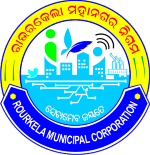NATIONAL URBAN LIVELIHOOD MISSION (NULM)
The National Urban Livelihoods Mission (NULM) is that the poor are entrepreneurial and have innate desire to come out of poverty. The challenge is to unleash their capabilities to generate meaningful and sustainable livelihoods.
The mission of the National Urban Livelihoods Mission (NULM) is:
“To reduce poverty and vulnerability of the urban poor households by enabling them to access gainful self-employment and skilled wage employment opportunities, resulting in an appreciable improvement in their livelihoods on a sustainable basis, through building strong grassroots level institutions of the poor”.
The mission would aim at providing shelter equipped with essential services to the urban homeless in a phased manner. In addition, the Mission would also address livelihood concerns of the urban street vendors by facilitating access to suitable spaces, institutional credit, social security and skills to the urban street vendors for accessing emerging market opportunities.
 |
Social Mobilisation and Institute Development (SM&ID) |
The mobilisation of urban poor households to form their own institutions is an important investment for an effective and sustainable poverty reduction programme. NULM envisages universal social mobilisation of urban poor into Self-Help Groups (SHGs) and their federations. At least one member from each urban poor household, preferably a woman, should be brought under the Self-Help Group network in a time-bound manner. These groups will serve as a support system for the poor, to meet their financial and social needs. Normally, women SHGs will be formed, however male SHGs of handicapped persons will be allowed to be formed. |
|
 |
Self Employment Program (SEP) |
This component will focus on financial assistance to individuals/groups of urban poor for setting up gainful self-employment ventures/ micro-enterprises, suited to their skills, training, aptitude and local conditions. The under-employed and unemployed urban poor will be encouraged to set up small enterprises relating to manufacturing, servicing and petty business for which there is considerable local demand. Local skills and local crafts should be particularly encouraged. Each City/Town should develop a compendium of such activities/projects keeping in view skills available, marketability of products, costs, economic viability etc. No minimum or maximum educational qualification is prescribed for the selection of beneficiaries under SEP. The percentage of women beneficiaries under SEP shall not be less than 30 percent. SCs and STs must be benefited at least to the extent of the proportion of their strength in the city/town population of poor. A special provision of 3 percent reservation should be made for the differently-abled under this programme. In view of the Prime Minister’s 15-Point Programme for the Welfare of Minorities, at least 15 percent of the physical and financial targets under this component shall be earmarked for the minority communities. |
|
 |
Capacity Building & Training (CBT) |
The Capacity Building and Training component is to transform the role of the Ministry of Housing & Urban Poverty Alleviation and State Agencies in charge of urban poverty alleviation into providers of high quality technical assistance in the fields of urban livelihoods promotion and urban poverty alleviation. |
|
 |
Scheme of Shelter For Urban Homeless (SUH) |
The main objective of Scheme of Shelter for Urban Homeless (SUH) is to provide shelter and all other essential services to the poorest of the poor segment of urban societies. The shelters should be permanent all-weather 24 x 7 shelters for the urban homeless. For every one lakh urban population, provisions should be made for permanent community shelters for a minimum of one hundred persons. Depending upon local conditions each shelter could cater to between 50 and 100 persons. |
|
 |
Support to Urban Street Vendors (SUSV) |
This component aims at skilling of street vendors, support micro-enterprise development, credit enablement and pro-vending urban planning along with supporting social security options for vulnerable groups such as women, SCs/STs and minorities.
|
|
 |
Employment Through Skill Training & Placement (EST&P) |
This component of NULM will focus on providing assistance for development / upgrading of the skills of the urban poor so as to enhance their capacity for self-employment and salaried employment. EST&P intends to provide training to the urban poor as per the skill demand from the market, so that they can set up self-employment ventures or secure salaried employment. EST&P will target the urban poor subjected to occupational vulnerability. No minimum or maximum educational qualification is prescribed for the selection of beneficiaries under EST&P. The percentage of women beneficiaries under EST&P shall not be less than 30 percent. SCs and STs must be benefited at least to the extent of the proportion of their strength in the city/town population of poor. A special provision of 3 percent reservation should be made for the differentlyabled under this programme. In view of the Prime Minister’s 15-Point Programme for the Welfare of Minorities, at least 15 percent of the physical and financial targets under this component shall be earmarked for the minority communities. Apart from that, special attention will be paid to the skill upgradation of vulnerable groups like beggars, rag pickers, construction workers, destitute, etc. |
|
 |
Administration And Other Expenses (AOE) |
2 percent of the allocation under NULM can be utilized at the Centre/State/City levels for administration and other expenses, including monitoring, development and maintenance of database, MIS, e-tracking, evaluation and other activities. |
|
 |
Information, Education And Communication (IEC) |
3 percent of the allocation under NULM can be utilized at the Centre/State/City levels for the purpose of IEC. |



